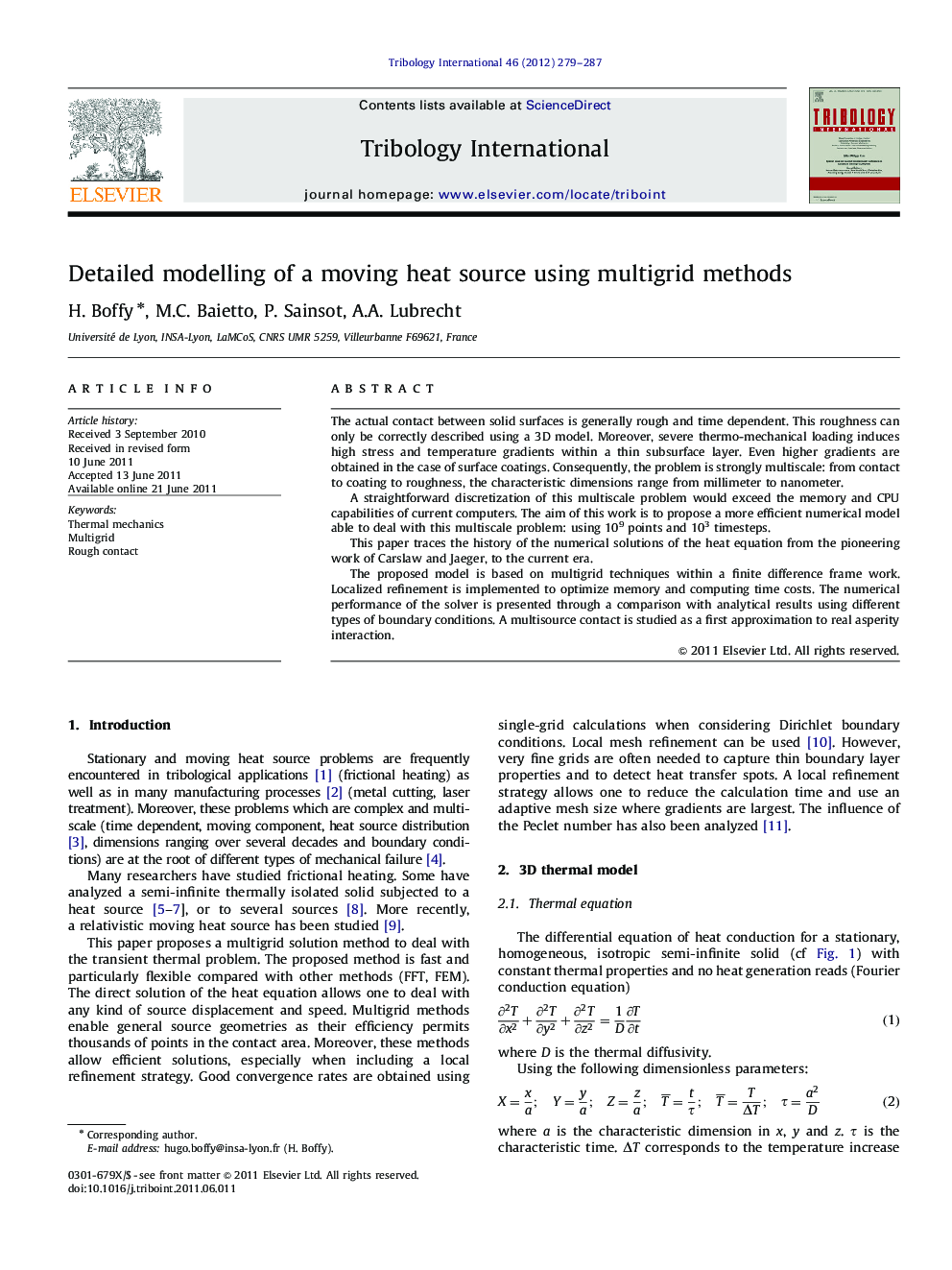| Article ID | Journal | Published Year | Pages | File Type |
|---|---|---|---|---|
| 615538 | Tribology International | 2012 | 9 Pages |
The actual contact between solid surfaces is generally rough and time dependent. This roughness can only be correctly described using a 3D model. Moreover, severe thermo-mechanical loading induces high stress and temperature gradients within a thin subsurface layer. Even higher gradients are obtained in the case of surface coatings. Consequently, the problem is strongly multiscale: from contact to coating to roughness, the characteristic dimensions range from millimeter to nanometer.A straightforward discretization of this multiscale problem would exceed the memory and CPU capabilities of current computers. The aim of this work is to propose a more efficient numerical model able to deal with this multiscale problem: using 109 points and 103 timesteps.This paper traces the history of the numerical solutions of the heat equation from the pioneering work of Carslaw and Jaeger, to the current era.The proposed model is based on multigrid techniques within a finite difference frame work. Localized refinement is implemented to optimize memory and computing time costs. The numerical performance of the solver is presented through a comparison with analytical results using different types of boundary conditions. A multisource contact is studied as a first approximation to real asperity interaction.
► MG techniques with finite different framework are extended to the thermal problem. ► The direct solution of the heat equation allows one to deal with any kind of source. ► The local refinement strategy reduces strongly the calculation time. ► The local refinement strategy allows one to capture large gradients and thin layers. ► Thousands of points are used in the contact area to deal with a rough source.
